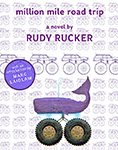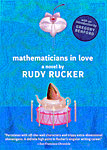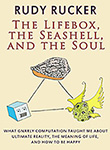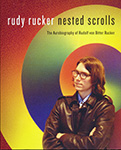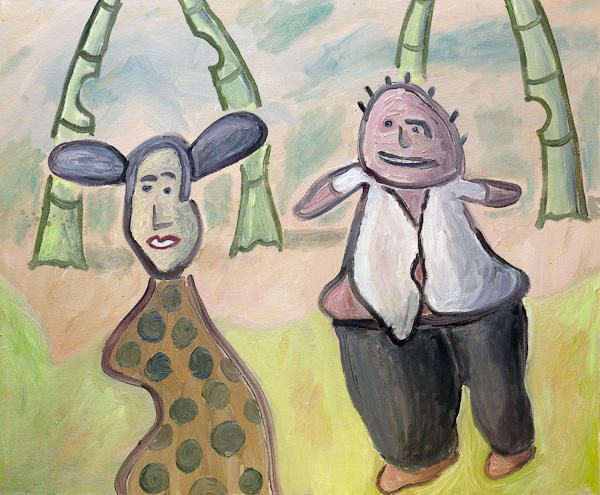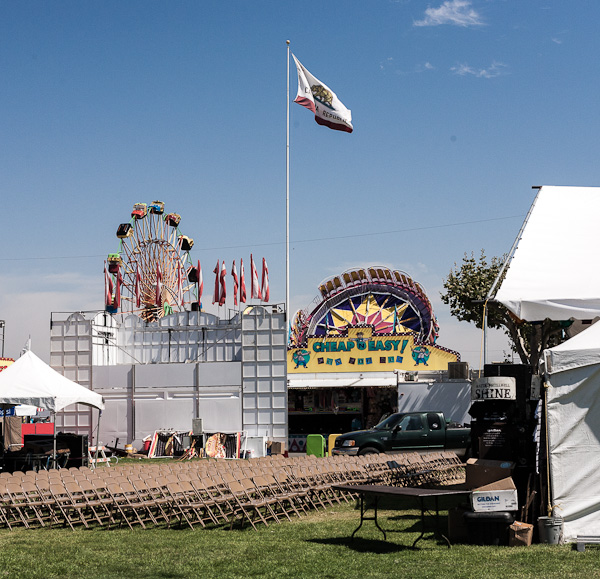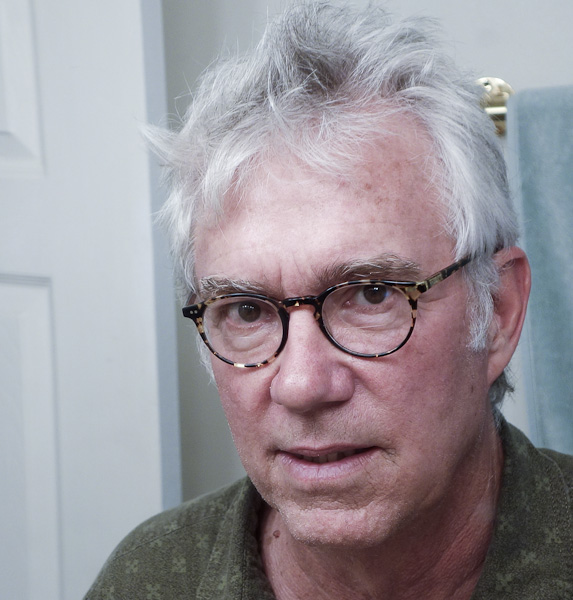I’ve been circling around and around some ideas that I want to use in my next novel, The Big Aha. In today’s post, I’ll expand on some of the remarks in my October 15, 2012, post, “SF Religion 3: Qwet.” But my focus isn’t on religion in today’s post, it’s on the nature of mind and the possibility of telepathy.
Open your (inner) eyes to your true mental life. Your state of mind can evolve in two kinds of ways that I’ll fancifully call—“robotic” and “cosmic”. The “robotic” mental processes proceed step-by-step—via reasoning and analysis, by reading or hearing words, by forming specific opinions. Every opinion diminishes you.

The “cosmic” changes are preverbal flows. If you turn off your endlessly-narrating inner voice, your consciousness becomes analog, like waves on a pond. You’re merged with the world. You’re with the One. It can be a simple as the everyday activity of being alert—without consciously thinking much of anything. In the cosmic mode you aren’t standing outside yourself and evaluating your thoughts.
The cosmic mode is what’s happening between/behind/around your precise robotic communicable thoughts. The idea is to notice the spaces between your thoughts, or to avoid being caught up in your thoughts. This is a fairly common meditation exercise.
We might have some specific brain sites that control when our state of consciousness flips from being with the One, that is, in a smooth, mixed, continuous or “cosmic” state—of being with the Many, that is, down to the “robotic,” specific-opinion state. If you’re a dreamy sort of person, your natural trend is to drift out to unspecificity, out the One. But other personality types tend always to be pushing down into the robotic, studying the details of the Many.

I’m imagining a qwet treatment that helps you can get into—and remain within—a smooth state for a longish period of time.
As I’ve often said, I have the experiential sensation that my mind oscillates between One/Many about sixty times per second. Between the “cosmic”/”robotic” consciousness modes. You do need both modes to get buy. The One state is like a radar ping you reach out into the world around you, and the Many state is when you say, “Okay, I’m alone here, it’s me against the world, what do I do next to stay alive?”
Breaking away from the cosmic mode can be thought as involving a quantum collapse. You go from a broader, more ambiguous state to a more specific state. How does the collapser work? It affects not just you, but the things that you’re looking at and coupled to. Everything around you becomes overly precise, that is, robotic instead of cosmic. Less interesting. Like—think of they way that some people can make a whole scene dull just by the way they start talking about it. “How much did that cost? Is that safe to have around? Did you notice the scratch on it?”

Do animals have collapsers? Do physical objects? Let’s say “not usually.” Might the ability to collapse be connected to having consciousness? Let’s say “yes.”
What if I use the Antonio Damasio’s definition of consciousness as “the ability to visualize yourself visualizing yourself.” You can watch a model of yourself watching yourself. It’s a three-level map. Actor, strategist, analyst. The actor just does things, like an animal. The strategist observes the actor and makes corrections. The analyst observes the strategist’s decisions and improves on them.
Suppose that this is a kind of physical map, a three-tier flow of quantum information, and that for a fixed-point theorem type reason, these flows cause quantum collapse—they throw a system into an eigenstate, that is, into a robotic, non-cosmic, fixed point. Humans are the main things that are three-tier collapsers, but such collapsers do occur naturally in certain places, just as certain types of crystals or mirrors might be found in nature. The spots with collapsers seem to have bad juju, that is, they’re inherently boring.
I see the collapsers as being like snags in a rushing muddy river of quantum flow. And the snags leave precise ripple wakes. And there can be a kind of beauty to the moiré patterns of the overlaid wakes—this is what we call our human culture.

In my novel, I want to work with the idea that managing to stay in the uncollapsed cosmic state, they can achieve a kind of telepathy. You can couple your “cosmic” mental state to the “cosmic” state of another person. I won’t be like a phone conversation. Your thoughts aren’t at all like a page of symbols—they’re blotches and rhythms and associations.
Key Plot Point: For quantum theoretic reasons, a quantum link between the two systems isn’t of a kind that can leave memory traces, otherwise the link is functioning as an observation that drags consciousness back down to the robotic mode. So you can’t directly exchange specific, usable info via quantum teep. In my novel this will be a disappointment to the government backers of the qwet experiments.
But your mind state will be changed by your teep interactions. But not in the obvious way of “remembering what they ”˜said’.” After teeping with someone, when you later drop back down into your chatty “robotic” state, you’ll find that you are saying things you wouldn’t have said before the merge. But maybe you’re not sure why.

This isn’t so different from a memory of a very deep, close, intense conversation with someone—a talk where you really got onto the same wavelength. Like a talk in bed with a lover, or chatting happy with a pal, or, getting into deep concepts with an admired mentor—telepathy happens.


